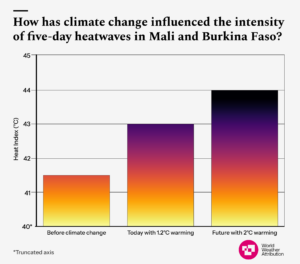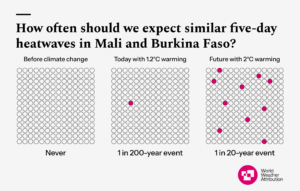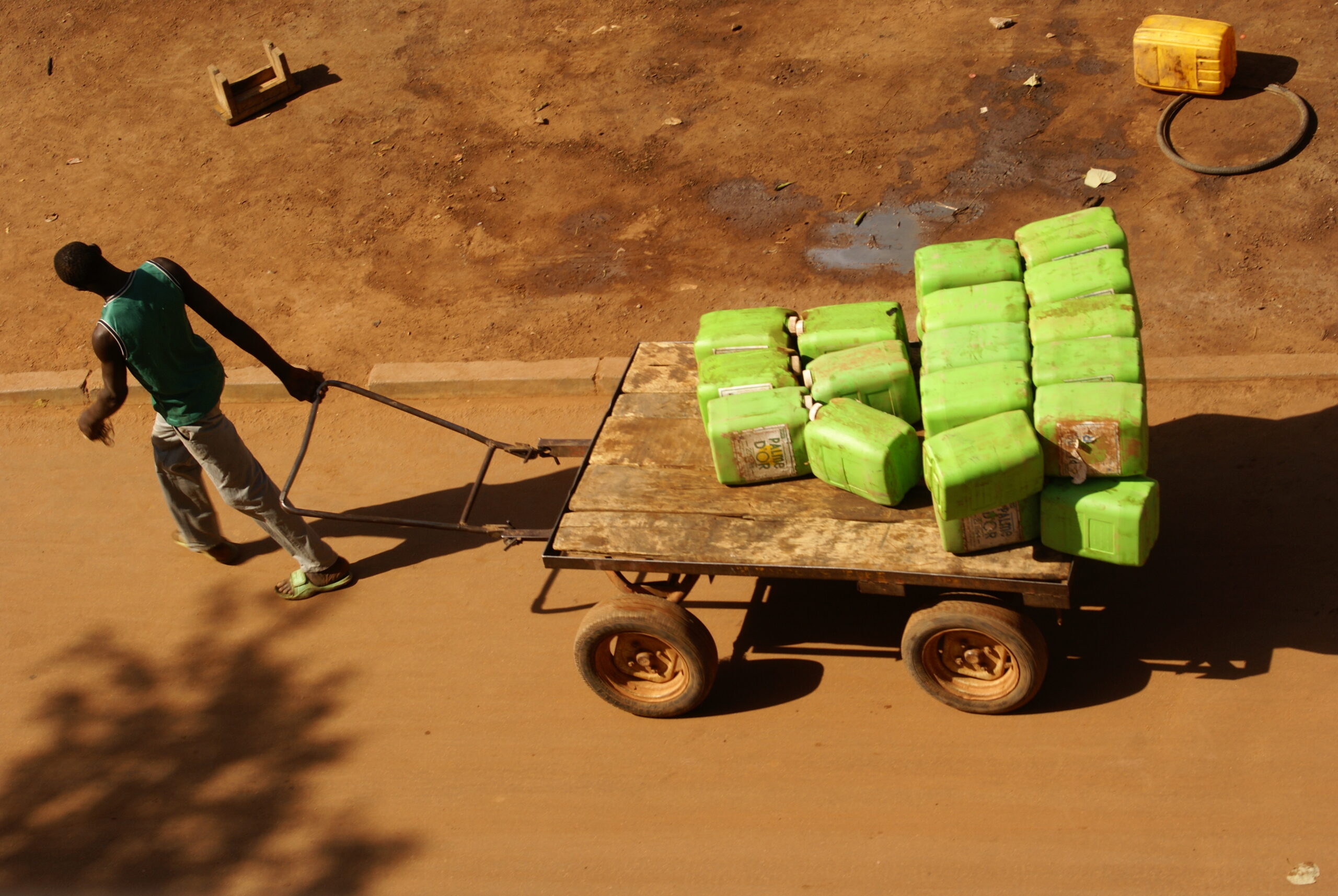Extreme temperatures were reported across the Sahel, including in Senegal, Guinea, Mali, Burkina Faso, Niger, Nigeria and Chad. In many of these countries power cuts occurred during the heat episode, making it especially difficult for the population to cope with the extreme temperatures.
Heatwaves are arguably the deadliest type of extreme weather event and while the death toll is often underreported and not known until months after the event, a surge in hospital admissions and deaths were reported from the Gabriel Touré hospital in Bamako, Mali between 1-4 April (Bahati, 2024).
The hospital recorded 102 deaths over the four-day period, which is significantly more than expected – in April 2023, the hospital recorded 130 deaths over the entire month (JolibaFM, 2024). While statistics for the cause of death have not been reported, around half were over the age of 60, and the hospital reports that heat likely played a role in many of the deaths. Furthermore, up to 44 bodies were buried in one cemetery in Bamako on Friday 5 April after the weekly service (DW 2024).
Scientists from Mali, Burkina Faso, Mozambique, the Netherlands, Sweden, the United States and the United Kingdom collaborated to assess to what extent human-induced climate change altered the likelihood and intensity of the extreme heat across the Sahel. Our analysis focuses in detail on the countries that had the highest temperatures, especially also over night and the large reported death toll: The southern part of Mali and Burkina Faso (fig. 1a). Here we look at the 5-day maximum and minimum temperatures over the March to May season and in April respectively. In addition we analyse the 5-day maximum temperatures in March to May over a larger
region (fig. 1b; 10 to 17°N, 16W to 20°E) encompassing the most affected parts of Senegal, Guinea, Mali, Burkina Faso, Niger, Nigeria and Chad.
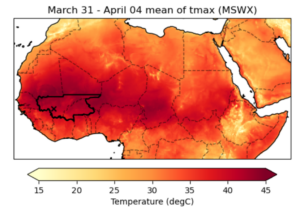
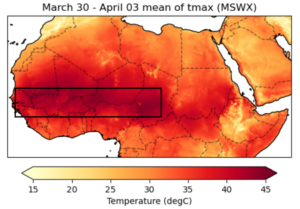
Main Findings
● While Burkina Faso and Mali are both countries with populations that are acclimated to high temperatures, the length and severity of this heatwave made it difficult for people to cope, as evidenced by the reported increased hospitalisations and deaths. Heatwaves are amongst the deadliest natural hazards with thousands of people dying from heat-related causes each year
and many more suffering other severe health and livelihood consequences. Many places lack good record keeping of heat-related deaths, therefore currently available figures are likely an underestimate.
● This heatwave coincided with Ramadan (fasting) and power cuts, which compounded the risk for vulnerable groups and even those not traditionally considered vulnerable. Even minimum temperatures, overnight, remained relatively high, making it so that people did not get a break from the heat. The power cuts further made it difficult for those who did have access to
mechanical cooling to use it, thus reducing their coping capacity.
● Even in today’s climate, that has warmed by 1.2°C since pre-industrial times due to human activities, the extreme heat observed over the Mali/Burkina Faso region is still rare. While the daily temperatures were extreme, with a return time of about 100 years, the 5-day maximum temperatures were particularly unusual with a return time of 200 years. Minimum temperatures were less extreme but still rare with a return time of 20 years over Mali/Burkina Faso. For the Sahel region the return time of the 5-day maximum temperatures are 30 years.
● To estimate the influence that human-caused climate change has had on the extreme heat since the climate was 1.2°C cooler, we combine climate models with observations. Observations and models both show that heatwaves with the magnitude observed in March and April 2024 in the region would have been impossible to occur without the global warming of 1.2°C to date.
● Extreme 5-day maximum heat as rare as the observed event over Mali/Burkina Faso would have been 1.5 °C cooler and 1.4 °C cooler over the larger Sahel region if humans had not warmed the planet by burning fossil fuels. For minimum temperatures over Mali/Burkina Faso the change in intensity is even larger: in a 1.2°C cooler climate the nighttime temperatures would have been 2°C cooler.
● These trends will continue with future warming. Over Mali/Burkina Faso a heatwave like the observed event would be another 1°C hotter in a 0.8°C warmer world (2°C global warming since pre-industrial times). An event of the same magnitude as observed in 2024 would then not be very rare anymore but occur 10-times more frequent than in today’s climate.
● We also assessed whether the current El Niño event had an influence on the extreme temperatures and found that while there is some contribution it is small compared to human-induced climate change, explaining about 0.2°C of the observed 5-day heat event.
● Rapid urbanization and loss of green spaces in cities such as Bamako and Ouagadougou have increased the urban heat island effect. Coupled with high vulnerability, this highlights the need for sustainable urban planning that integrates green spaces, and building designs that account for high temperatures.
● Critical infrastructure such as electricity, water, and healthcare systems needs to be strengthened to adapt to the increasing frequency and intensity of extreme heat, requiring increased investment to ensure reliable access and service delivery.
